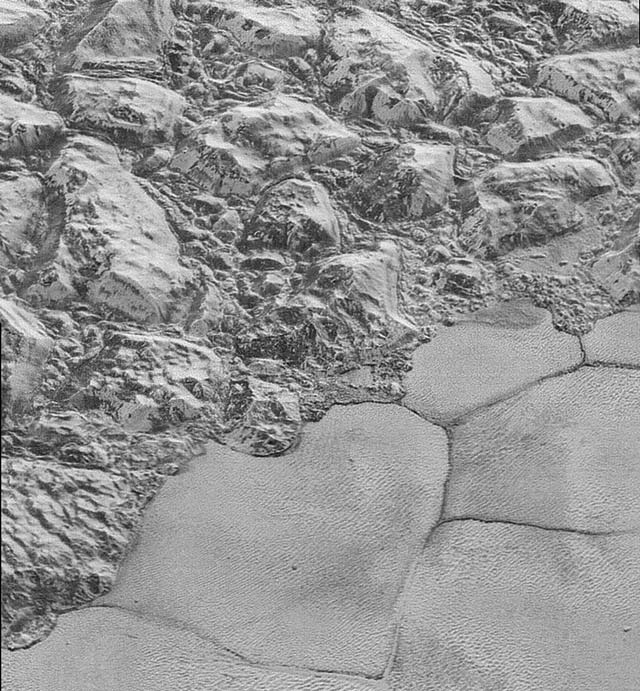
On July 14, NASA's New Horizons became the first spacecraft to pass by Pluto, offering scientists unprecedented insight.
Previously released high-resolution images from that historic flyby have revealed unparalleled geographical variety on the planet, from soaring mountains, to sand dunes and frozen ice floes.
The latest pictures, made available Friday, are part of a sequence taken near New Horizons' closest approach to Pluto and show a mix of terrains that are cratered, mountainous and glacial in nature, NASA said in a statement.
NASA spacecraft shows Pluto wrapped in haze, ice flows
"These new images give us a breathtaking, super-high resolution window into Pluto's geology," said New Horizons Principal Investigator Alan Stern in the statement.
 This handout picture obtained from NASA on December 5, 2015 shows an image taken from NASA's New Horizons spacecraft showing new details of Pluto s rugged, icy cratered plains. on the planet Pluto.PHOTO: AFP
This handout picture obtained from NASA on December 5, 2015 shows an image taken from NASA's New Horizons spacecraft showing new details of Pluto s rugged, icy cratered plains. on the planet Pluto.PHOTO: AFP"Nothing of this quality was available for Venus or Mars until decades after their first flybys; yet at Pluto we're there already -- down among the craters, mountains and ice fields - less than five months after flyby!" he added.
"The science we can do with these images is simply unbelievable."
The images have resolutions of some 250 to 280 feet (77 to 85 meters) per pixel and form a strip 50 miles (80 kilometers) wide, according to NASA.
Orbiter reveals clues about loss of atmosphere on Mars
New Horizons -- a nuclear powered spacecraft about the size of a baby grand piano -- began a download of new images and other data several months ago and will continue to send data back to Earth until late next year.
In October, data from the unmanned New Horizons probe revealed that Pluto has blue skies and patches of frozen water, as well as a rich variety of colors on its surface.
NASA said scientists expect more images from the set over the coming days, describing those received so far as "the best close-ups of Pluto that humans may see for decades."







1730797335-0/Untitled-design-(81)1730797335-0-270x192.webp)









COMMENTS
Comments are moderated and generally will be posted if they are on-topic and not abusive.
For more information, please see our Comments FAQ